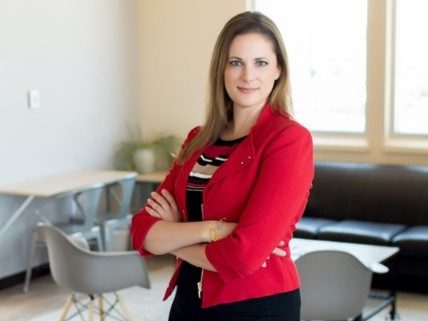If you’ve been working for the last 20 years, you know we’ve got problems with email communication in the workplace. Email has been the go-to communication for a long time and it took us way too long that it was terrible at what we were forcing it to do.
Have you ever thought of banning email at your workplace to improve productivity? Many companies have adopted more modern communication tools like Slack and Microsoft Teams. But have we learned our lesson from email? Why is communication so hard?
Krish Ashok leads the Digital Workplace Practice at TCS and he thinks about this stuff a lot. And designs full systems for most of the Fortune 100. You’ll love what he has to say.
What we learned from this episode
Technology can often make work harder, not easier
Krish’s 3 layer recipe for a digital workplace
Krish uses the word skeuomorphic
How we got hooked on an email addiction
How improvements in email technology (higher attachment limits, offline clients) encouraged bad behavior
The difference between 50 pieces of paper on your desk and 2000 unread emails in your inbox
Email is really only good for a very specific type of communication
What you can do right now
Define the narrowest rules possible for when you can send email_
Don’t take your bad communication habits from email to messaging
Key quotes
“But it is quite scary that we’ve now reached a point that on more than half of your time, in a knowledge work environment, is spent just sending emails, which is blatantly ridiculous.”
“But the problem is that we treat email as if it’s actually like chat.”
“The problem today is that the default email view is chronological. That’s a terrible way to be productive when you can’t really know what’s an important message, what’s a notification from a system, what’s spam from my bank who are trying to send me a new mortgage.”
“Email or Slack or Teams–they’re not necessarily designed in a way that’s actually healthy for us on the long run. We’re not designed to swim in an ocean of notifications and be relentlessly bombarded with applications that want to grab our attention.”
Today, our guest is Krish Ashok. He’s the Global Head of Digital Workplace Practice at TCS. And this is Work Minus Email. Hi, Krish. How are you?
Good, good. I’m doing well. How are you?
I’m doing excellent. I’m so excited about this topic, something I’ve been waiting for for a while. But why don’t you start off just telling us a little bit about yourself?
So, I head the Digital Workplace Practice at TCS, which largely involves advising and implementing workplace technologies for Fortune 1000 customers of TCS. So, this includes all the largest companies in the world. And as you might imagine, work can get quite messy with inside large organizations. And all too often, technology actually makes it harder, as opposed to actually making it easier. And so, our job involves really designing it in such a minimalist way that it actually makes people productive and creative. So, that’s what I do.
And if people aren’t familiar with TCS, they should be, but it’s like this underbelly if you’re not familiar with it. So, tell us about TCS a little bit.
So, TCS is one of the world’s largest technology companies. It is the one with the largest market cap right now. It’s a $20 billion global IT services company headquartered in India with operations in 70+ countries with over 400,000 employees. And we largely do everything, from digital to back office to infrastructure services for most Fortune 1000 companies.
And you’re obviously deep into technology when we’re talking about digital workplace. Define for us that term, digital workplace. What does that mean for you?
Digital workplace has, in my opinion, three layers. The lower most layer is the technology or the foundational layer, which has to do with your office desktops, the email systems and collaboration systems that you use the networking equipment, and so on. And then you start to have at the next layer is some of the workplace applications that you use that are slightly more advanced, your intranet, even applications that allow you to schedule meetings or so on one level above just being the infrastructure layer. And then at the next level, you actually start to have the overarching cultural and behavioral aspects of the workplace in whether it enables here’s where both the physical and the digital and the behavioral combined, to enable employees to actually work in a more engaging, in a more creative manner. So, in a sense, the digital workplace straddles all of these three layers.
So, you said email makes the foundation for it. Let’s start there because we’re talking about Work Minus Email. We’re actually trying to get rid of email to a certain extent. So, give me your interpretation of the history of email, how it came about, and how it came to really dominates most communication forms.
Sure. Interestingly enough, email is far older than the internet. Email is over 50 years old. And it actually started with the U.S. Department of Defense original project called the ARPANET, which eventually grew into the internet. It’s a gentleman by the name of Ray Tomlinson was the first man to send an email across the ARPANET network, which originally was designed to connect university and research laboratories that were working for the U.S. Department of Defense. And what was fascinating is that the original email was designed as a digital replacement for office memos, largely, again, because these were small teams that were spread across. And so, obviously, not 20,000 people in a single skyscraper, where you could use office memo systems, and so on. So, these were distributed so they needed a digital equivalent. So, that’s how it began.
And what’s fascinating is that within a few years, 75% of all ARPANET traffic was email. So, we were pretty addicted to email, even back then. So, that’s how it began. And then it eventually evolved into corporate email as multinational corporations began to have offices in more places than just a single skyscraper in a downtown in the U.S. and they began global companies and so on. You started having the first generation of really sophisticated email software from IBM Lotus Notes, and then Microsoft Exchange, and so on. And then came consumer web mail that democratized email for everyone. Started off with Hotmail, and then Yahoo! Mail, and then obviously, Gmail came and ate all of them up because it just made email dead simple, powerful, and give you unlimited storage, and so on. So, that’s a very, very 20,000 feet view of email’s history, if you will.
So, you mentioned being addicted to email. So, what is it about it? Is there some kind of element of email that’s so powerful that people were drawn to it that’s like, wow, this is the perfect communication channel for them?
I think there are two elements to this. On the one hand, if you think about email as the almost digital skeuomorphic, if you will, replica of office memo systems. And for those of you listeners who don’t know how those systems work, they were actually sorting offices, there were lots of employees, they were these systems, vacuum filled tubes that would shuttle memos up to the 17th floor, and so on. And people, you would actually have two trays on your desk called in and out. That’s how the term inbox and outbox came. And people would write memos and attach with paper clips anything else they wanted to and write who they wanted to send it to, and a human being would come with this mobile tray, and then take your memos, and then send it to whoever. And so, if you look at your email client, every one of these things suggest that history. Our send button is literally an envelope, attachment is actually a physical paper clip. None of it actually makes sense in a digital world.
But what is quite different about the digital version of email is that the moment you started having inboxes and this notion of, oh, you have 20 unread emails, and so on, email software, obviously constantly evolved to improve the user experience to the point where the design encouraged you to keep checking email. So, eventually, we got to the point by once the mobile phone came and you started getting mobile notifications. So, earlier, you would have to get to office in the morning, which is when you see your email, but with mobile phones, you literally get emails around the clock and those notifications keep coming. And so, there’s also this dopamine satisfaction when you get your inbox count to zero, although it’s increasingly becoming near impossible now. And the second thing is the fact that you get this illusion that you’re constantly in touch. It’s giving off the illusion that you’re constantly working, even if you’re not in the office. So, all of these things eventually made email something that any corporate employee was largely simply addicted to. And even if they weren’t, you simply had to get addicted because there was no other way to demonstrate that you were working.
I find this fascinating that, at some point, when people said, “I’m working right now,” that meant something different. And then it became, “I’m in my email client. I’m answering emails.” That is working. It almost became synonymous to that, even though you’re really just talking. It’s just a fascinating thing that happened.
Yeah, it’s quite fascinating, that shift from the industrial worker to the knowledge worker. And even within the knowledge worker phenomenon, email came much later. A knowledge worker prior to email still spent a fair amount of time on what would be considered actual work. I mean, if it was an engineer, he would be sitting and doing calculations. If it was an accountant, he would be looking at the books. But it is quite scary that we’ve now reached a point that on more than half of your time, in a knowledge work environment, is spent just sending emails, which is blatantly ridiculous.
So, let’s assume that with the advent of Gmail, that was the height of email’s reign, even Google’s core offering to offices now, G Suite, is built around the fact that people say, “I want something that links with Gmail that has that ability to connect to it.” Talk us through the downfall of email, how it’s come to a point where it’s hated, where it’s overused, where it’s misused. What do you see for that?
So, the fascinating thing is that the downfall of email came about as a result of software getting better and better and making it easier to send email. Back when Internet bandwidths were low, you could not send very large attachments. In fact, you were limited in the number of emails you could send. And the first generation of email, you had to be online while you were actually composing your email, which actually made things quite expensive because data costs were pretty high and you had to be hooked up to a modem and online to even type your email. The rise of offline clients, the fact that you can now compose your email, not be connected, hit the send button, and your system will send it behind the scenes, all of these essentially encourage bad behavior, if you will.
So, once emails became cheap, people started sending them for completely silly reasons. And I think the worst culprit is the carbon copy function, which again, for most of your listeners, it’s called carbon copy because in the original office memo system, there would be a carbon paper that would make a copy of the actual message that you wanted to send to somebody. And now, it’s carbon copy and BCC. And the bane of every corporate employee’s existence is essentially being carbon copied on emails that one has to do nothing for. So, it’s just there in your inbox, you’re just being CCed, and people are either doing a reply all. And so, once the average number of emails and employees getting went over 50 a day, you can see how that’s starting to get quite ridiculous. I think that was the downfall.
In a physical paper world or in a world where it was harder to send emails, you would actually only get about up to 10 memos a day is actually too much. The physical nature of it actually made people think about the fact that, no, I really don’t want 50 pieces of paper sitting on my inbox. But in the digital world, you have no sense of that. Sending is easy, receiving is easy. And basically just we let people hit the reply all button, and now we have this huge for us. So, that is essentially, in some sense, the start of the downward because people couldn’t deal with 100 emails a day, or 200 emails a day. For example, a few months back, I had 2000 unread emails because I was on a one week vacation. So, you can imagine how bad it is.
And I think about if we go back more than 50 years before email was there, if you imagine that all of your workforce just hung out in the mailroom, you talk about there’s mailroom and there’s vacuum tubes, people were just standing around waiting for something. They’re constantly checking their box, then nothing’s coming in. They check it again five minutes later. They check it again. You think that’s absurd for people to be working like that. Yet that’s essentially what we’re doing now.
Yeah, exactly. And what’s actually interesting is that as a digital collaboration tool, there’s increasing evidence that email is ideal for small group, private conversations that are asynchronous in the sense that you’re not actually expecting a reply within the next minute. But the problem is that we treat email as if it’s actually like chat. We expect real time responses. And we actually end up including 50 or 100 people in these distribution lists. And those distribution lists also make it worse because sometimes there are emails in a large enterprise that are addressed to multiple distribution lists, which are in turn made up of distribution lists. So, you could literally be sending an email to tens of thousands of employees without you even realizing it. And that’s the crazy thing.
The other interesting thing is that it’s increasingly obvious that it’s not a great tool for day to day team coordination at all because it’s just hard to make things out of. Everything is chronological. And it’s not divided into appropriate threads. Although it requires on your discipline to read every email, move it into the right folder, or to set up complex rules, which you have to keep changing every time the email format changes and so on, for you to be truly productive with email which most people do not have the time for. So, it’s just the recognition that people need to use different tools for different use cases. And email isn’t the one tool that we must use for every single form of communication. It’s only good for certain small forms of communication, ideally, like an email from your CEO that you get once a quarter, or an important legal announcement where you need to know if people have read it or not. And ideally, for communicating with people from other companies. Internally, you ought to be using more of a conversational tool, like a Slack or a Microsoft Teams. And that’s really what’s more productive for a lot of workers. And that’s what makes startups, which generally don’t tend to use email, slightly more productive than large organizations.
Let’s get into that. What are some of the solutions you see that the more progressive clients you work with or the companies that are really out there, how have they limited the use of email? And what are they replacing it with?
So, let me talk about the fact that before the actual technological alternatives to email started coming up, the smartest companies were trying to figure out ways to reduce the glut of email. So, they tried very creative approaches. I remember, for example, even in our own company, we had the option, for instance, several years, almost five or six years back, to increase the attachment size that you would allow within your corporate network. And we decided not to increase it because what we found is that if I increase the attachment size that you can send to 100 MB, people will send 100 MB files, and it’s only going to make things worse. So, organizations actually started to actually make email harder. So, for example, many companies don’t let you send emails to more than 50 people. They say that, no, you know what? If an email is being sent to more than 50 people, that should be a blog post. It’s not an email. It’s not private anymore.
And then a couple of other creative solutions that really didn’t take off was there was this one company, some six or seven years back, that attempted to make the entire email ecosystem like a gamified economy. So, they introduced a virtual currency, which every employee would get at the start of the day, and then you had to attach that virtual currency to every email you send as an indicator of how important you think it is. And it’s finite. So, you want to save most of your currency for your most important email, and you don’t want to attach it to emails that you don’t think are very important. So, the idea is that by default, your inbox would be sorted based on the amount of currency that’s been attached, and in some sense, a better, market based mechanism for a sender to indicate that this is really important to me. So, please read this first. Well, the problem today is that the default email view is chronological. That’s a terrible way to be productive when you can’t really know what’s an important message, what’s a notification from a system, what’s spam from my bank who are trying to send me a new mortgage. So, it’s just become a massive mess and there’s no way to really do this.
And then once what happened around the rise of platforms like Google Hangouts, and then Slack was really the first innovator in the space of really designing a collaboration tool that had all the technical capabilities of email in being able to message someone, being both mobile as well as desktop, being able to send attachments and files, and being able to integrate with a corporate active directory of some sort. But essentially be able to keep messages in different threads, each of which you could assign different priorities, you could choose to check some of them and not choose to check some other threads, and all information was automatically organized. And when a new person joined the team, you didn’t have to forward them 100 emails to bring them up to speed, but they were already on boarded, because they could see that full message history and so on. And it gave the user far more control over when I want notifications, what threads are more important, and opportunities to simply say that, look, you know what? I’m off the grid right now so don’t send me notification, and so on.
So, this was obviously the first and this really became big amongst the startup ecosystem. And pretty soon we had pretty much a very similar product called Microsoft Teams, and you had other companies building these conversational collaboration systems that were not meant to be a complete replacement. But the positioning is more of use this for team coordination and use email for more large scale organization messaging, and perhaps for collaborating with people outside your organization. So, that’s been the evolution of alternatives to email.
Krish, let’s look forward in the future a little bit. Let’s say we’re having this conversation five years from now. And now, instead of Work Minus Email, we’re talking about Work Minus Slack, Work Minus Microsoft Teams, because they’re not perfect solutions. What are some of the limitations that you feel like are going to just be exacerbated over the next five years as people continue to use these tools?
I think there’s a lot of philosophical point here. So, what I’m starting to see now is that email or Slack or Teams, they’re not necessarily designed in a way that’s actually healthy for us on the long run. We’re not designed to swim in an ocean of notifications and be relentlessly bombarded with applications that want to grab our attention. And we’re already seeing the evidence of that from other consumer social media applications, be it Facebook, or Twitter, or Instagram, all of which use persuasive design in rather devious ways to keep you hooked and to get you to get a small dopamine rush from somebody liking something you did or somebody sending you a response or you’re clearing your inbox of all messages, and so on. So, there is this larger movement towards people detoxing from overuse of digital inputs. I still believe we’re in the first generation of people saying no to email and embracing new tools.
And you’re absolutely right. There are already companies saying I just can’t deal with the number of notifications on Slack. If I had 100 unread emails, I have 400 unread messages on Slack. And this isn’t actually helping me out. And in many cases, it’s often because users don’t have the time to sit and personally configure the priority levels of notify me about this, don’t notify me about this. And I think the single biggest technological improvement we see is AI that you can train so that your collaboration systems that you use, no matter what they are, be it email, be it Slack, be it a new collaboration tool that will come up, and so on in the future, each of them will adapt themselves to your working style. I mean, if you are someone who likes a summary at the end of the day, or does not like to be disturbed for hours on end, then the system will adapt to that and summarize all the key things that you need to do, and instead of making you read 40,000 words from so many email, but really summarize stuff that you need to do. And I think we’re in the phase where we are actually over using technology. And in some sense, we are we thinking that, here’s the technology, let’s find a problem for it. I mean, that’s the phase we are in now. And I think we will eventually start to see human beings pushing back. And then ultimately a lot more personalized AI-driven approach to helping you manage the work style and the collaboration style that best works for you.
Like you said, we can’t just transfer the number of emails to notifications and multiply it. That doesn’t really solve the problem. But this is good because we have to figure out, like we talk about in the show a lot, we need to work as humans and humans can’t process so many messages at one time. So, we need to find a way to limit those and to work with technology to improve that.
I mean, ever since iOS introduced the screen time control mechanism, I actually have reduced my social media use to about 15 to 30 minutes a day. And it used to be two hours. I was checking Twitter relentlessly. And I now have a decent sense of how much time I actually spend inside my Outlook or Gmail client, or within my Office Microsoft Teams. And I’m really looking to reduce that as well. So, ultimately, these are all two sides of the same coin. Twitter or social media, not really any different from the digital collaboration tools used for work. I mean, you can convince yourself that this is work and that isn’t. But it isn’t. It actually prevents you. These are go betweens between you and another human being. The ideal way of communicating with another human being is to walk over to their desk and talk to them. I mean, nothing replaces that. But if you cannot do that, and if the timings don’t work out and you can’t always meet someone, you may not be in the same place, yes, you can use video conferencing, you can use chat, you can use email. All these are go betweens, but they’re nothing like actually engaging with people and brainstorming and co-locating and getting things done. And in some sense, I think a lot of work cultures should really be focused on maximizing that rather than drown people in emails, and in meetings that are completely unproductive. I think a lot of these newer systems, as a combination of culture, plus a bit of AI, plus a bit of personalization, and a lot of ground rules should really focus on reducing these technological interventions around purely collaboration. And instead encourage the serendipitous exchange and meeting of actual real people and flowing of ideas, and so on.
Novel, real people meeting together, that’s a great idea. Krish, tell us. What do you think? Email is going to be around for another 50 years? What do you think?
It will absolutely be around, while the usage may reduce, and hopefully, we’ve made some very silly mistakes that people don’t do even now, even my corporate email is actually more than 75% of that email is system notifications, from my claim system, my CRM system, and so on. And all of that is mixed up with actual human conversations. And first and foremost, we got to fix some of those very basic, low hanging fruit issues. I think email will be around. People will actually go back to using it primarily for small, one on one, small group, private conversations, and preferably conversations outside the boundaries of your organization when you really can’t use chat. There is obviously room for asynchronous communication. And that’s really what email is. Chat is synchronous. There’s an expectation of immediacy. There’s an expectation of more of a very transactional, here’s something you need to do to coordinate and get something done today, as opposed to the more leisurely more long-term thinking.
I remember one of our executives once said, back in the BlackBerry days, is that the organization would make better decisions if you just remove the O and K button from the Blackberry, because people were reading important requests on tiny screens and making very poor decisions by quickly saying OK or that’s basically an approval that will then have other financial implications going forward. And he said that this is essentially that if you’re making a complex financial decision, please don’t rely on a BlackBerry. Please look at it on a larger screen, look at data, and so on. And I think we have to somehow learn that some of our digital behaviors are not optimal at all. And it’s an ongoing journey. I think email will be around hopefully people will use it only for, as I said, asynchronous communication outside of your core team, if you will. That’s really what email is for.
Krish, it’s been great to speak with you. You’re a very insightful guy. Your Twitter feed is hilarious. You have a lot of wit and personality you bring to it. So, how can people stay in touch with you?
They can follow me on Twitter. That’s krishashok on Twitter or email me at [email protected].
Okay. So, you want them to email you, huh?
So, I’ve cleaned up my Gmail to the point where there’s no spam now. So, I’m pleasantly surprised that nowadays I sometimes open my Gmail inbox with no new messages. So, I’m really happy about that.
Excellent. Well, great. Krish, it’s been great to speak with you and we look forward to connecting more.
Yeah. Thank you. Bye.
As the head of the Digital Workplace practice, Krish helps customers imagine the future of work for their employees. His team works at the intersection of design, technology and behavioral science and helps conceptualize and implement modern, persuasive and immersive intranets, collaboration and learning experiences.
He additionally heads the Digital Workplace Reimagination initiative within TCS, designing, building and implementing social collaboration, HR apps and Microlearning platforms for 400,000 associates.












